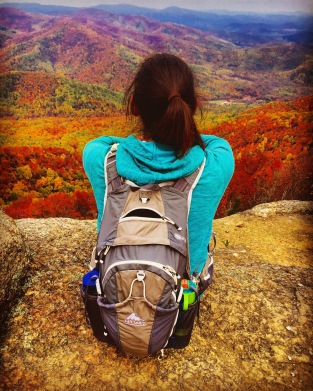“What the 28F?” was my first thought when I saw where I would be sitting on an upcoming 14-hour flight. This wasn’t any ordinary middle seat—no, it was the middle seat of the middle row. Instantly, my mind went into CIA operation-mode. How was I going to get out of this? How could I use my charm, con skills, and persistency to finagle a better seat? Alas, the answer was I didn’t.
So instead of telling you my success story, here is what I’ve learned about how to survive long flights in lame seats.
Step 1: Accept your fate. Sure, you can (and should) check in online 24 hours in advance to see if anything has opened up; try to get to the airport super early and hope for an exit row seat; and ask the gate agent if someone with a better seat miraculously didn’t show for the flight. However, what you should also be doing is preparing.
Step 2: Prepare. I kept my bag under my seat so that I could be in reach of anything I might need right away. This includes neck pillow, eye mask, compression socks, headphones, tissues, hand and face lotion, medicine bag, and water. Yes, it’s overkill. Yes, it’s worth it.
Step 3: Make nice. When you board the plane, give a smile or nod of greeting to the poor soul you are going to make get up multiple times in the duration of the flight. Having her/him on your side is not a bad idea. If your aisle companion speaks English, perhaps ask if s/he prefers you gently wake or step over if s/he is sleeping when you need to get up. Some kinder folks than myself may patiently wait for their aisle mate to wake; however, I don’t have much shame in asking people to move. It’s the risk they took when they booked the aisle seat. Plus, as an aisle person myself, I will always happily move for anyone inside the row. Therefore, I choose to be apologetically nice over polite.
Step 4: Get “comfortable.” In order to avoid throwing too many elbows at your neighbors during the flight, set up camp when you first sit. In the seatback pocket, put your reading materials, water, headphones, tissues, and any other vitals you want to quickly access.
Step 5: Pace yourself. If not already obvious from Step 3, I like getting up, walking around, and generally doing anything other than sitting in that uncomfortable seat. If you’re the same, then take advantage of any opportunity to get moving. If your aisle companion gets up to use the restroom, either use the restroom yourself or just stand in the aisle, soaking up those glorious moments that you can get vertical. If you do need to use the restrooms, stand for a while afterwards and do a few stretches.
Step 6: Celebrate. Nothing can bring you down quite like your own bad attitude. Therefore, I don’t just cheer for my survival at the end of the flight, I celebrate the steps in between. Made it through eight of the 14 hours? Well done, over half way there. Nice job getting a nap in without falling on anyone. That was soooo impressive how you got out your laptop without hitting your dozing neighbor’s leg. And, then…finally…Congratulations, you made it!
The moral of this story is get your seats early. But the lesson is that when you inevitably draw the short straw in life, do what you can to prepare for the situation and celebrate the little victories. It’s all about what you make of it.




 You’re hiking through the woods, surrounded by majestic mountains, a trickling brook, and trees filled with the colors of Fall. But none of that seems to matter. Instead, you are annoyed by the mosquitoes biting you in places you didn’t even know you had, thirsty because you ran out of water back at Mile 2, and burnt to a nice lobster red. No matter the length of your planned hiking trip, some simple preparations can help you enjoy the journey so much more.
You’re hiking through the woods, surrounded by majestic mountains, a trickling brook, and trees filled with the colors of Fall. But none of that seems to matter. Instead, you are annoyed by the mosquitoes biting you in places you didn’t even know you had, thirsty because you ran out of water back at Mile 2, and burnt to a nice lobster red. No matter the length of your planned hiking trip, some simple preparations can help you enjoy the journey so much more.

You must be logged in to post a comment.